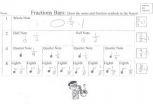(Press-News.org) GAINESVILLE, Fla. — The percentage of electronic waste occupying our landfills has grown at an alarming rate over the last decade, giving rise to concerns about the toxicity of components used in consumer electronics.
Researchers at the University of Florida are looking for ways to minimize environmental hazards associated with a material likely to play an increasingly important role in the manufacture of these goods in the future. The results of their most recent studies are published in the March 2012 issue of Nanotoxicology.
Carbon nanotubes are already being used in touch screens and to make smaller, more efficient transistors. And if current research to develop them for use in lithium ion batteries is successful, carbon nanotubes could become important technology for powering everything from smartphones to hybrid vehicles. But for all of the promise developers see in this emerging technology, there is also some concern.
"Depending on how the nanotubes are used, they can be toxic – exhibiting properties similar to asbestos in laboratory mice," said Jean-Claude Bonzongo, associate professor of environmental engineering at UF's College of Engineering. He is involved in a research collaboration with Kirk Ziegler, a UF associate professor of chemical engineering, to minimize this important material's potential for harm.
In particular, the UF team is investigating toxicity associated with aqueous solutions of carbon nanotubes that would be used in certain manufacturing processes.
"At the nano-scale, electron interactions between atoms are restricted, and that creates some of the desirable traits like the high conductivity that manufacturers want to take advantage of with carbon nanotubes," Ziegler said. "But exploiting those properties is difficult because the nanotubes tend to clump together."
For that reason, carbon nanotubes have to be treated in some way to keep them dispersed and available for electron interactions that make them good conductors. One way to do it is to mix them with an aqueous solution that acts as a detergent and separates the tangled bundles.
"Some of the surfactants, or solutions, are toxic on their own," Bonzongo said. "And others become toxic in the presence of carbon nanotubes."
He and Zeigler are focusing their investigations on solutions that become hazardous when mixed with the carbon nanotubes. Their most recent results indicate that toxicity can be reduced by controlling the ratio of liquid to particulate.
A cost-effective means of unbundling nanotubes remains one of the last hurdles for manufacturers to clear before they can employ the technology in mass-produced electronics. Current processes used for laboratory prototypes, including mechanical homogenization or centrifugal sifting, would be too expensive for manufacturing consumer electronics. For that reason, liquid suspension agents may be the way forward if we are to have nano-tech products for the masses.
"It's an emerging technology," Bonzongo said. "We want to get ahead of it and make sure that the progress is sustainable — in terms of the environment and human health."
### END
UF researchers look for ways to make an emerging technology safe for environment
2012-03-22
ELSE PRESS RELEASES FROM THIS DATE:
Genetic mutation found in familial chronic diarrhea syndrome
2012-03-22
HUNTSVILLE, Ala. -- When the intestines are not able to properly process our diet, a variety of disorders can develop, with chronic diarrhea as a common symptom. Chronic diarrhea can also be inherited, most commonly through conditions with genetic components such as irritable bowel syndrome. Researchers in Norway, India, and at the HudsonAlpha Institute for Biotechnology have identified one heritable DNA mutation that leads to chronic diarrhea and bowel inflammation.
Shawn Levy, Ph.D., faculty investigator at HudsonAlpha said, "Based on the effects seen from this one ...
Middle school teacher support lowers risk for early alcohol use
2012-03-22
SEATTLE – March 21, 2012: Anxiety, depression, stress and social support can predict early alcohol and illicit drug use in youth, according to a study from Carolyn McCarty, PhD, of Seattle Children's Research Institute, and researchers from the University of Washington and Seattle University. Middle school students from the sixth to the eighth grade who felt more emotional support from teachers reported a delay in alcohol and other illicit substance initiation. Those who reported higher levels of separation anxiety from their parents were also at decreased risk for early ...
Monarch butterflies down again this year as decline continues, says Texas A&M expert
2012-03-22
COLLEGE STATION, March 21, 2012 – Unlike their colorful wings, the future of Monarch butterflies may not be too bright and their numbers are expected to be alarmingly down again this year, says a Texas A&M University researcher.
Craig Wilson, a senior research associate in the Center for Mathematics and Science Education and a long-time butterfly enthusiast, says reports by the World Wildlife Fund, private donors and Mexico's Michoacan state show that Monarch numbers will be down almost 30 percent in 2012 as they make their annual trek from their breeding grounds in ...
International Logistics Solutions, an Offshore Group Company, Becomes Certified C-TPAT Trade Partner
2012-03-22
International Logistics Solutions (ILS) has recently been certified as a partner in The Customs-Trade Partnership against Terrorism (C-TPAT) program.
By participating in this important Customs and Border Protection Agency initiative, ILS will be making a vital contribution towards helping to secure the nation's borders, as well as ensuring the continued flow of international free trade.
As a C-TPAT partner, the role of International Logistics Solutions (ILS) is to make certain that appropriate security measures, based upon risk analysis and consistent with C-TPAT ...
Low socioeconomic status means worse health -- but not for everyone
2012-03-22
Poverty is bad for your health. Poor people are much more likely to have heart disease, stroke, and cancer than wealthy people, and have a lower life expectancy, too. Children who grow up poor are more likely to have health problems as adults.
But despite these depressing statistics, many children who grow up poor have good health. In a new article published in Perspectives on Psychological Science, a journal of the Association for Psychological Science, Edith Chen and Gregory E. Miller of the University of British Columbia suggest a possible reason: some children have ...
Parents of children with cancer distrust and fear online sources of health information, study shows
2012-03-22
BUFFALO, N.Y. -- Parents and adult caregivers of pediatric cancer patients prefer personal consultations with trusted health care providers over online sources for information about their child's illness, according to a University at Buffalo research study.
Despite the accessibility of online medical information, the UB study found that parents not only distrusted information found through the Internet, they often feared what types of information they might encounter.
"Respondents were telling us they were uncertain of the information online and that they were afraid ...
False killer whales use acoustic squint to target prey
2012-03-22
Hunting in the ocean's murky depths, vision is of little use, so toothed whales and dolphins (odontocetes) rely on echolocation to locate tasty morsels with incredible precision. Laura Kloepper from the University of Hawaii, USA, explains that odontocetes produce their distinctive echolocation clicks in nasal structures in the forehead and broadcast them through a fat-filled acoustic lens, called the melon. 'Studies by other people showed odontocetes have the ability to control the shape of the echolocation beam and it has always been assumed that they are using the melon ...
Getting in rhythm helps children grasp fractions, study finds
2012-03-22
Tapping out a beat may help children learn difficult fraction concepts, according to new findings due to be published in the journal Educational Studies in Mathematics. An innovative curriculum uses rhythm to teach fractions at a California school where students in a music-based program scored significantly higher on math tests than their peers who received regular instruction.
"Academic Music" is a hands-on curriculum that uses music notation, clapping, drumming and chanting to introduce third-grade students to fractions. The program, co-designed by San Francisco State ...
Prenatal exposure to combustion-related pollutants and anxiety, attention problems in young children
2012-03-22
NEW YORK ( March 22, 2012) - Mothers' exposure during pregnancy to a class of air pollutants called
polycyclic aromatic hydrocarbons (PAH) can lead to behavioral problems in their children. PAH are
released to air during incomplete combustion of fossil fuel such as diesel, gasoline, coal, and other
organic material.
The study is the first report of associations between child attentional and behavioral problems among school‐age children and two complementary measures of prenatal PAH exposure: monitored air concentrations of PAH and a PAH-specific biomarker of exposure ...
Nearly all states have taken action on Affordable Care Act's Patients' Bill of Rights
2012-03-22
March 22, 2012, New York, NY—As the second anniversary of the Affordable Care Act approaches, a new Commonwealth Fund report finds that 49 states and the District of Columbia have already taken action supporting the law's implementation, such as passing legislation, issuing regulations or other guidance, or actively reviewing insurer filings. Early insurance market reforms in the law include new rules for insurers such as bans on lifetime limits on benefits and dependent coverage for young adults up to age 26.
The report, Implementing the Affordable Care Act: State Action ...

